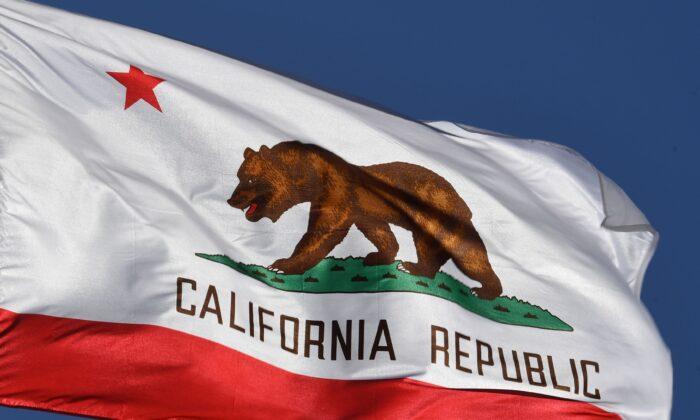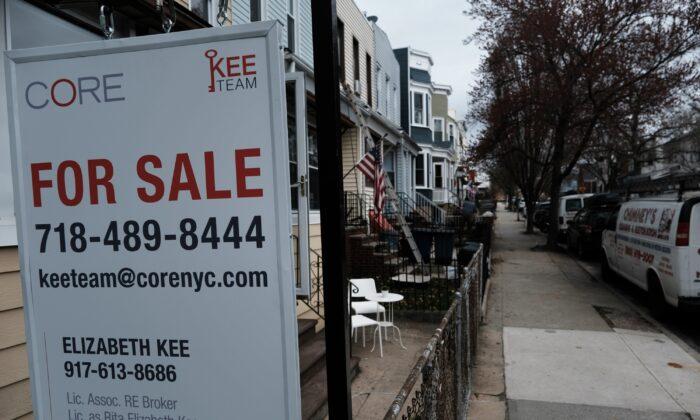The combined state and federal capital gains tax rate in California would rise from the current 37.1 percent to 56.7 percent under President Biden’s American Families Plan, according to a new study from the Tax Foundation.
That increase, which would include federal, state and local taxes on financial gains from the sale of assets in California, represented the highest levy among the 50 states, the Tax Foundation’s analysis said.
Nationwide, the combined average capital gains tax rate would amount to an estimated 48.4 percent under the president’s proposal, with the top federal tax rate increasing to 43.4 percent, according to the report. That compares to the current combined average rate of about 29 percent, the study said.
A total of 13 states would have a top combined capital gains tax rate above 50 percent if Biden’s blueprint to help U.S. families with education costs and child care were to become law, according to the Tax Foundation.
Combined Capital Gains Taxes Under Biden Families Plan
| Rank | State | Top Capital Gains Rate (Current Law) | Top Capital Gains Rate (Proposed) |
| 1 | California | 37.1% | 56.7% |
| 2 | New York | 34.7% | 54.3% |
| 3 | New Jersey | 34.6% | 54.2% |
| 4 | Oregon | 33.7% | 53.3% |
| 5 | Minnesota | 33.7% | 53.3% |
| 6 | Vermont | 32.6% | 52.2% |
| 7 | Hawaii | 31.1% | 50.7% |
| 8 | Maine | 31.0% | 50.6% |
| 9 | Connecticut | 30.8% | 50.4% |
| 10 | Idaho | 30.7% | 50.3% |
| 11 | Nebraska | 30.6% | 50.2% |
| 12 | Montana | 30.6% | 50.2% |
| 13 | Delaware | 30.4% | 50.0% |
| 14 | West Virginia | 30.3% | 49.9% |
| 15 | Arizona | 29.8% | 49.4% |
| 16 | Rhode Island | 29.8% | 49.4% |
| 17 | Georgia | 29.6% | 49.2% |
| 18 (tie) | Maryland | 29.6% | 49.2% |
| 18 (tie) | Virginia | 29.6% | 49.2% |
| 20 | Kansas | 29.5% | 49.1% |
| 21 | Missouri | 29.2% | 48.8% |
| 22 | Wisconsin | 29.2% | 48.8% |
| 23 | North Carolina | 29.1% | 48.7% |
| 24 | Iowa | 32.3% | 48.6% |
| 25 (tie) | Kentucky | 28.8% | 48.4% |
| 25 (tie) | Massachusetts | 28.8% | 48.4% |
| 25 (tie) | Mississippi | 28.8% | 48.4% |
| 25 (tie) | New Hampshire | 28.8% | 48.4% |
| 25 (tie) | Oklahoma | 28.8% | 48.4% |
| 30 (tie) | Illinois | 28.8% | 48.4% |
| 30 (tie) | Utah | 28.8% | 48.4% |
| 32 | Ohio | 28.6% | 48.2% |
| 33 | Colorado | 28.4% | 48.0% |
| 34 | Michigan | 28.1% | 47.7% |
| 35 | South Carolina | 27.7% | 47.3% |
| 36 | Louisiana | 29.8% | 47.0% |
| 37 | New Mexico | 27.3% | 46.9% |
| 38 | Indiana | 27.0% | 46.6% |
| 39 | Pennsylvania | 26.9% | 46.5% |
| 40 | Alabama | 28.8% | 46.4% |
| 41 | Arkansas | 26.8% | 46.4% |
| 42 | North Dakota | 25.5% | 45.1% |
| 43 (tie) | Alaska | 23.8% | 43.4% |
| 43 (tie) | Florida | 23.8% | 43.4% |
| 43 (tie) | Nevada | 23.8% | 43.4% |
| 43 (tie) | South Dakota | 23.8% | 43.4% |
| 43 (tie) | Tennessee | 23.8% | 43.4% |
| 43 (tie) | Texas | 23.8% | 43.4% |
| 43 (tie) | Washington | 23.8% | 43.4% |
| 43 (tie) | Wyoming | 23.8% | 43.4% |





